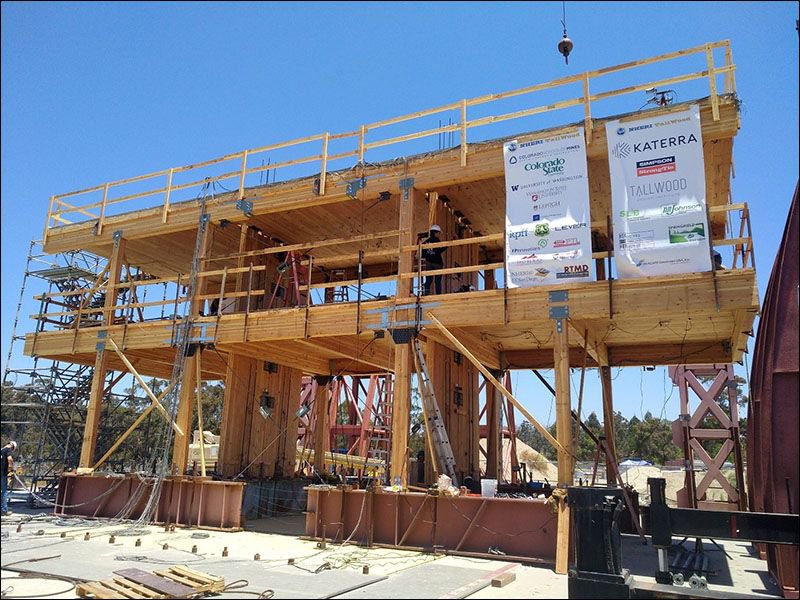FOR IMMEDIATE RELEASE
NSF, NIST Team Up on Disaster Resilience Research Grants
NSF-funded NHERI network provides physical and intellectual resources for DRRG solicitation proposals
West Lafayette, IN, July 10, 2019 To strengthen infrastructure and community resilience, and to prevent damaging losses in the face of natural hazards, the National Institute of Standards and Technology (NIST) and the National Science Foundation (NSF) plan to award a total of $3.1 million for scientific and engineering research.
The agencies will co-manage the Disaster Resilience Research Grants (DRRG) program and intend to make 8-12 awards of up to $400,000 each.

Leveraging NSF investments
A network of 11 experimental facilities, the NSF-funded Natural Hazards Research Infrastructure (NHERI) provides vital physical and intellectual resources for researchers pursuing a DRRG award. In their proposals, principal investigators are encouraged to leverage NHERIs experimental facilities, computational modeling and simulation resources, as well as its world-class data repository.
Another resource, the NHERI Five-Year Science Plan (January 2020), details a range of natural hazards research topics that are relevant to this solicitation. The Science Plan is a roadmap for high-impact, high-reward, hazards engineering and interdisciplinary research leveraging the NHERI network. "The plan aims to guide future research in the earthquake, wind, and coastal hazards research communities, including NSF and other funding agencies, said Julio Ramirez, principal investigator for NHERI's Network Coordination Office. We call on engineers and scientists to employ the plan as a fundamental resource when developing grant proposals seeking to make our communities safer and more resilient against natural hazards.
DRRG solicitation details
Earthquakes, hurricanes, tornadoes, fires and floods cause tremendous damage to communities across the U.S. every year. With this joint solicitation, the NSF and NIST are calling for research proposals that advance understanding of disaster resilience in support of improved, science-based planning, policy, decision-making, design, codes and standards.
NSF and NIST are hosting an informational webcast on Aug. 3, 2020 to discuss the DRRG program and answer questions about this solicitation. Letters of intent are due August 14, 2020. Proposals are due by September 15, 2020.
Find details about the program, eligibility and submission instructions on the NSF program solicitation 20-581 website.
Investigators wishing to know more about NHERI resources should visit the NHERI-DesignSafe website.



Contact:
Julio Ramirez, PhD
Karl H. Kettelhut Professor in Civil Engineering
Director, NHERI-NCO Center Lyles School of Civil Engineering
Purdue University
(765) 430-7853
About the Natural Hazards Engineering Research Infrastructure
Funded by the National Science Foundation, NHERI is a network of experimental facilities dedicated reducing damage and loss-of-life due to natural hazards such as earthquakes, landslides, windstorms, and tsunamis and storm surge. It is supported by the DesignSafe Cyberinfrastructure. NHERI provides the natural hazards engineering and social science communities with the state-of-the-art resources needed to meet the research challenges of the 21st century.





